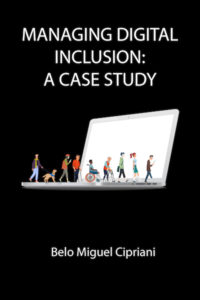 “How can I make sure I’m being inclusive?” This is a common question author Belo Miguel Cipriani, Ed.D., owner of the digital access firm Oleb Media, receives almost daily from his clients.
“How can I make sure I’m being inclusive?” This is a common question author Belo Miguel Cipriani, Ed.D., owner of the digital access firm Oleb Media, receives almost daily from his clients.
The book Managing Digital Inclusion: A Case Study helps to answer this question by walking readers through a qualitative case study that examines how one small business owner in an urban U.S. city prioritizes digital inclusion in his daily operations.
Technology has provided more people access to products and services, yet some individuals who would benefit the most from digital access to resources are frequently excluded from participation. One group that is largely neglected is the disability community. Despite federal regulations intended to ensure that people with physical/mental disabilities are included in public digital platforms, organizations continuously design websites, applications, and interfaces without people with disabilities in mind.
This is particularly the case with small businesses, which are most commonly reported as having inaccessible digital platforms.
In this case study, which is an abbreviated version of the author’s doctoral dissertation, a responsive interview model was used, and one small business owner’s experiences, attitudes, and priorities were recorded.
From the study, six themes appeared, which are examined in this book:
1. Perceptions of disability influence digital inclusion
2. Powerful branding suggests digital access
3. Business owners are unaware of accessibility guidelines
4. UX testing overlooks input from people with disabilities
5. Inclusion is tough to enforce on digital platforms
6. Workarounds hinder digital improvements
After reading this case study, readers should gain a deeper understanding of digital access, as well as ways to better identify digital inclusion gaps in their own organizations, products, services, and trainings.
